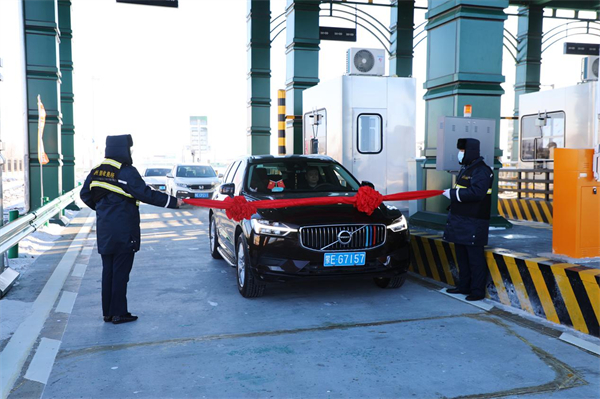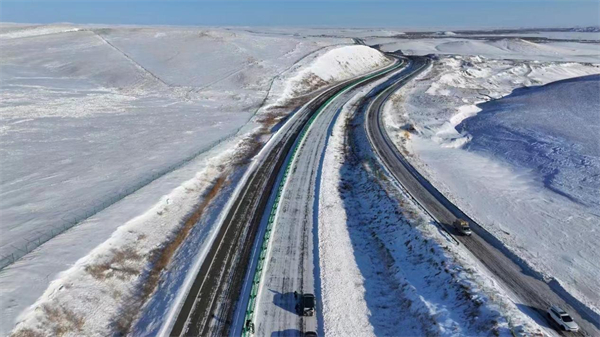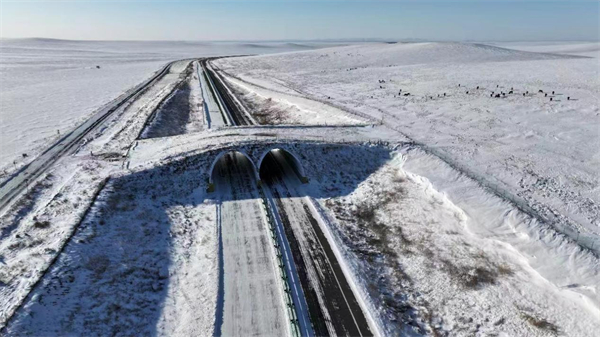Environmentally friendly Suifenhe-Manzhouli Highway now fully operational

A ceremony marking the opening of the Hailar to Manzhouli section of the Suifenhe-Manzhouli Highway is held on Dec 10. [Photo/Grassland Media]
The Hailar to Manzhouli section of the Suifenhe-Manzhouli Highway (G10), one of the main arteries of the national highway network, officially opened to traffic on Dec 10.
The newly opened section is 188.68 kilometers long, and its opening marks the full connection of the expressway.
G10 connects Suifenhe city in Northeast China's Heilongjiang province with Manzhouli, the largest land port in China, in North China's Inner Mongolia autonomous region.
It is expected to boost the prosperity of the port economy, help ramp up international trade, and support the construction of the country's northward opening-up.
Not far from the Manzhouli toll station on G10 is the Erka wetland.
The wetland is located on the upper reaches of the Ergune River, with a total area of 5,652.77 hectares. Hailar River, Xinkai River, and other rivers flow through the area, making it an important water source for Manzhouli.
On one hand, there is a significant traffic artery, and on the other, a precious wetland resource. How should the road be built?

An aerial view of the newly-opened Hailar to Manzhouli section of the Suifenhe-Manzhouli Highway. [Photo/Grassland Media]
In order not to disturb this precious wetland, the original design of crossing the wetland with a mainly earth-filled roadbed was adjusted to a bridge-dominated design spanning the wetland after several rounds of discussions by experts in multiple fields.
This minimized the impact on the wetland ecology but resulted in an additional cost of nearly 1 billion yuan ($136.98 million).
During the construction process of the elevated bridges, the builders implemented the concept of green development by adopting "subtracting and adding" measures.
"Subtracting" means the timely disposal and clearing of pollution sources such as wastewater and waste materials generated during the construction process to minimize the impact on natural ecosystems.
"Adding" means carefully understanding the habits of wild animal populations along the route, and creating exclusive wildlife "corridors" to facilitate their drinking, foraging, and migration.
"Spending nearly 1 billion yuan more to protect the beautiful wetland for the benefit of future generations is money well spent!" exclaimed Zhang Yongchun, a patrolman at the Erka wetland.

A bridge is built on the Suifenhe-Manzhouli Highway to facilitate wild animals' drinking, foraging, and migration. [Photo/Grassland Media]



 Print
Print Mail
Mail





